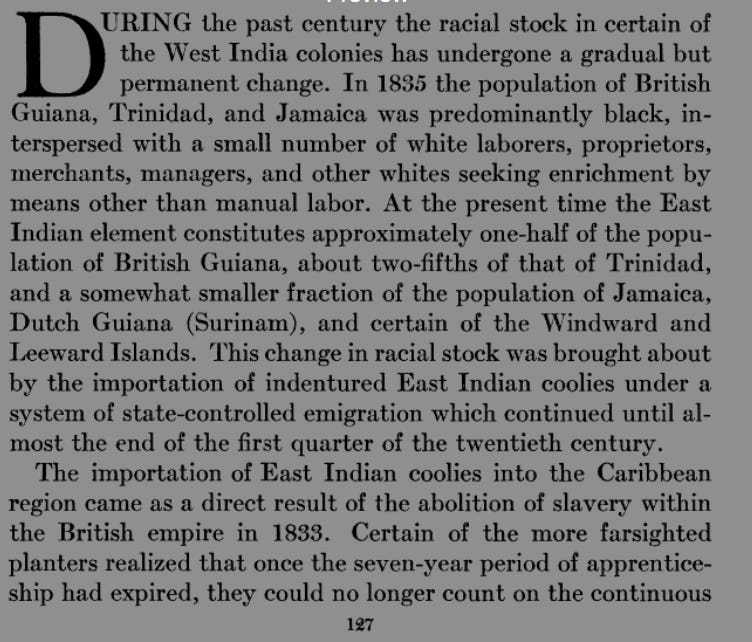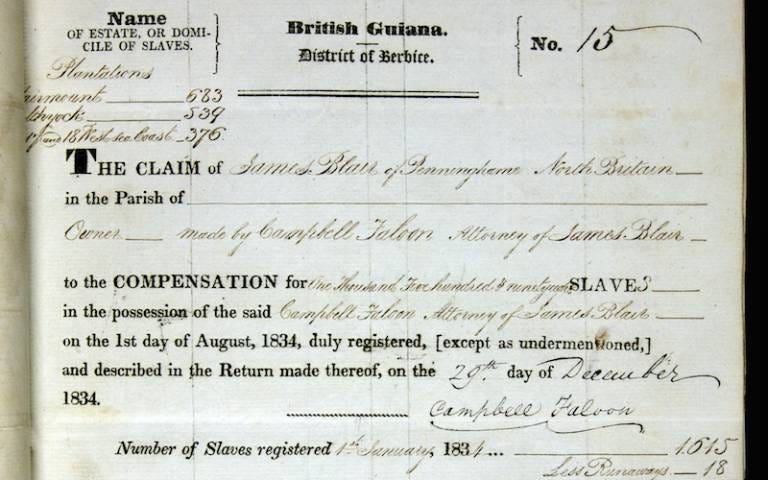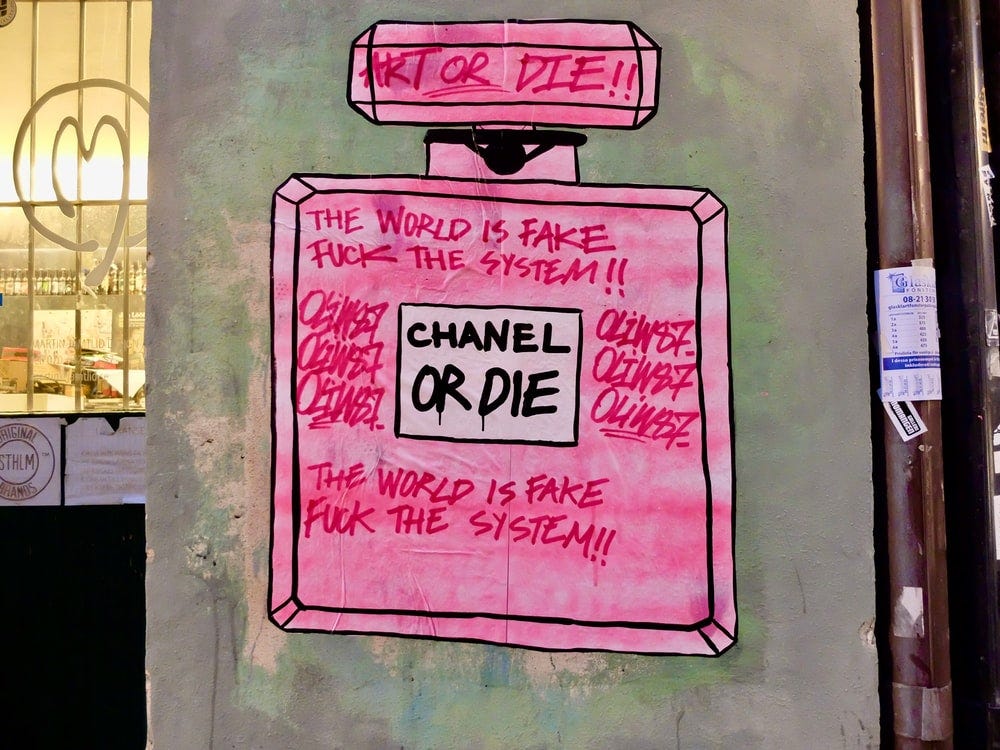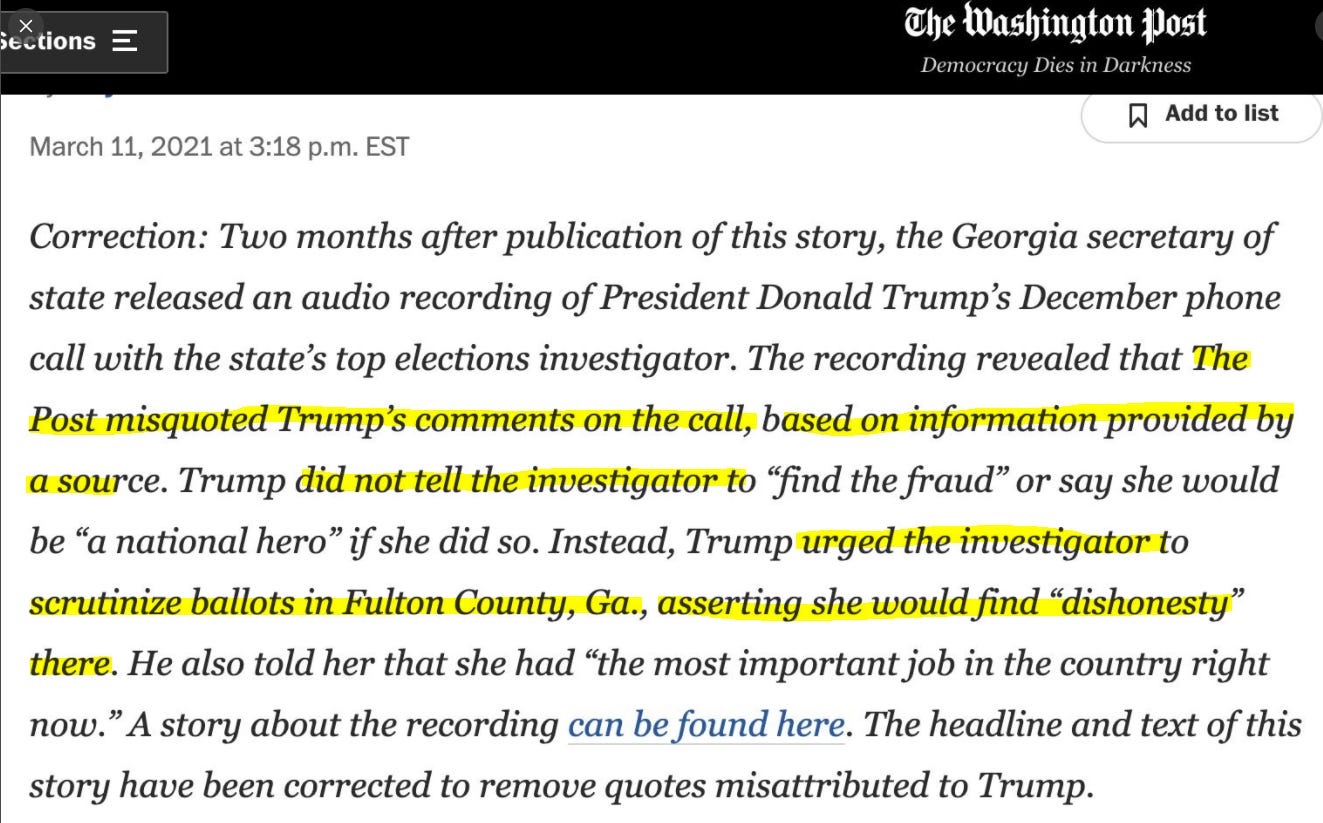Insightful newsletter of Drishtikone: Issue #265 - The REAL Crime of Inequity
People from Africa, India, and China were taken as slaves to the British isles and Americas. While crimes against the Blacks are recognized, those committed against the Indians are negated. Why?!
“When we attempt to exercise power or control over someone else, we cannot avoid giving that person the very same power or control over us.” ― Alan Wilson Watts, The Way of Zen
Equality needs everything equal. Inequity - specifically selected argument of inequity, negates equality.
The period from 1600 onwards was one of the darkest times in human history. People of one race, using unbridled greed and ruthlessness, used one painfully constructed story - of Jesus Christ and his virgin birth, etc - to create a mascot that could be used to camouflage and lead their attack on the rest of mankind.
Natives of at least three continents (the Americas and Australia-NZ) were chained, killed, tortured, and wiped out. Now, they exist only in small pieces of land as nothing more than cute exhibits.
Natives of two other continents (Africa and Asia) were enslaved, traded, and thrown far away from their homes with their identities wiped out.
Today, when we talk about equality - then it has to be in a way that recognizes the pain that mankind has gone through on account of that ruthless evil that was perpetrated in the name of a fake narrative and story.
This is not a call to make this generation either represent the victimhood of those past generations or be the ones to answer for the crimes of their forefathers. For, that would be yet another atrocity!
This is a call to recognize those crimes. Committed on the slaves from Africa, indentured slaves from China and India, natives of North and South America, and of Australia-NZ.
Recognize that the suffering happened in equal measure. One successful Obama does not negate the pain that is inherent in the Black community. One successful Priti Patel or Sundar Pichai does not take away from the crimes that the Indian people went through as indentured slaves and forced poverty by the British.
Just as using Obama’s success to negate his African credentials is cruel, so is ridiculing Priti Patel’s claim to having faced racism. Both had a different way of handling the crimes of racism that they actively encountered in their lives. They did not let their victimization define them. They instead used it to rise higher.
Victimization does not have to always become a caricature by manifesting into a neat-nice victim card. It can brave the insults and still rise higher with the full force of humanity in one’s possession behind it.
But in doing so, the pain is not imaginary. It is a collective experience. A scar. A scar that is looked at, tended to, and taken care of. While moving ahead. But it is there nevertheless.
Worse than inflicting the wound on someone is to gaslight him and tell him that this wound never existed. Or he self-inflicted it on himself. Or even more cruelly - to tell him that even to talk about that wound is akin to being a bigot. That to even point out the wounds that men of cruel and cunning intentions inflicted on millions would be a blot on entire humanity. The voice of the wounded is a reflection of some malaise in him.
How long would this ordeal of cunning criminality be allowed in the name of the good of the victim?!
The wounds of Africans have been recognized. Movies made. Books written. Committees constituted. Laws made.
What about the wounds of slavery and civilizational attack inflicted on Indians - predominantly Hindus?
How is it that even discussing it is being made a crime?
In the new liberal ethos of the West today, gaslighting a wronged group of people, enslaved and tortured is the new definition of human rights.
That inequity.. that crime is what needs to be battled by us all.
For equality to really be a reality.
Slavery in another name
Incessant famines and plunder of wealth had brought unimagined misery and poverty to people in India. The lives were subsistence and means were very meager.
In Lucknow, around 1887, an Indian woman met a man who promised her a way out of misery. He promised her “that she would be able to get twenty-five rupees a month in a European family, by taking care of the baby of a lady who lived about 6 hours’ sea-journey from Calcutta.”
That was the ticket out of her misery and her family’s misfortune. She went on board the ship.
She was instead shipped to Natal, South Africa. (Indian Immigrants Commission Report, Natal, 1887, cited in Carter and Torabully, 2002, p. 20) (Source)
The British had “abolished slavery” in 1833. In quotes, because that was the stated lie by the state. The reality was something else.
The slave trade that was hitherto practiced by the Colonial British empire was replaced by the indenture system. It was slavery by another name.
2 million Indians were uprooted from their homes in India after having thrust abject poverty on millions via plunder of resources and sent to work in faraway lands without money, proper food, and living conditions.
Indian indentured slavery should be remembered as one of British and Australian capitalism’s historical atrocities. The indenture system, as it is commonly called, existed between 1834 and 1920, during which time about 2 million Indians were transported to 19 colonies across the British empire, and to some French and Dutch territories. More than 400,000 were taken to both Mauritius and Malaysia, 240,000 to what was then British Guiana, 150,000 to Natal (now part of South Africa), 145,000 to Trinidad and Tobago and more than 60,000 to Fiji. The mass displacement created a substantial diaspora, with Indian migrants and their descendants approaching half the population in some countries. (Source)
Many, like that woman from Lucknow, were taken by stealth. Lied to and pushed into indentured slave trade paying with their lives, sweat, and blood for a debt that they never owed!
Until 1835, when slavery was the norm, Blacks slaves were the flavor of the day for the racist European human flesh traders. After that, the flavor changed to Indians.
It is not just a coincidence then that the “racial stock” in the West Indian / Caribbean islands changed dramatically post-1835.

Indians were the new Africans.
Two million, per the state records, were moved outside India as indentured slaves. Coolies, as they were called. Whatever the name, it was slavery, as the US politicians recognized as well.

Coolie trade - a fancy name for ‘slave trade’ - was a way to create indentured slave servants out of Indians and the Chinese.
The "coolie trade" refers to the importation of Asian contract laborers (especially Chinese and Indians) under force or deception during the 19th century. It emerged during the "gradual abolition" of slavery in the early 19th century, and coolies were exploited as substitutes for slave labor. The British were the first to experiment with this infamous form of labor migration when they imported 200 Chinese to Trinidad in 1806, when the British ended the slave trade. By 1838, some 25,000 East Indians had been exported to the new British East African colony of Mauritius. While Indian coolies were mainly transported inside British colonies, 250,000 to 500,000 Chinese coolies were imported from 1847-1874 to various British, French, Dutch and Spanish colonies in the Americas, Africa and Southeast Asia. During this twenty-seven year period, about 125,000 Chinese coolies were sent to Cuba. They were predominantly men from southern China exported via Macao (then a Portuguese colony). Eighty percent or more were sent directly to sugar plantations. Coolies worked and lived no better than slaves, having insufficient food, lacking promised medical care, working long hours, and suffering physical torture. (Source)
The emancipation of the African and Black slaved around the British empire meant the beginning of slavery for Indians, just under a new name. The site of the National Archives in the UK shares the imperatives of indenture trade post-Black slave emancipation.
The farms, the plantations, and the large infrastructure projects were there, just that the Black slaves had gone away.
That is where the indentured Asians - Chinese and Indians - came in.
Following the emancipation of slaves in 1833, and the period of unpaid apprenticeship that followed, many liberated Africans left their former masters. For the owners of sugar-cane plantations, who required a regular, docile and low-waged labour force, this appeared to spell economic disaster. Britain was forced to look elsewhere for cheap labour and turned its attention for a brief period to China, and then to India. The solution came in the form of a new system of forced labour, which in many ways resembled enslavement. Indians, under an 'indentured' or contract labour scheme, began to replace enslaved Africans on plantations across the British empire, in Fiji, Natal, Burma, Ceylon, Malaya, British Guiana, Jamaica and Trinidad. (Source)
Britain, as the National Archives, calls it was “forced to look elsewhere for cheap labour.” Forced?! And Slavery (under a different name) was “the solution”! How pretentious! When slavery is characterized as a “solution” that too a “forced one” for those who are committing this horrible crime in the first place, then one needs to sit up and think!
The losing of slaves as free labor and the fall of the British economy not only re-started the slave trade in a different name. But it also “forced” the British government to pay £17 billion as compensation to the slave owners for “loss of their property.”
That is how the hallowed Oxford got its Codrington Library. And how its Professors strut around talking of inequities as they enjoy the fruits of slave trade without any hesitation!
In 1834 after the abolition of slavery when the Church and the plantation owners were forced to release them, the British Parliament paid £20m – about £16.5bn today – as appropriate compensation for the loss of “property”, meaning slaves. The slaves, of course, received nothing out of this experience. Oxford received the Codrington Library. (Source)
Here is a receipt of the compensation paid to one of the slave owners.

Meanwhile, in the new colonies, where the indentured slaves were brought in to replace the freed Blacks, the demographic change brought its own tensions. The Blacks and Indians were in almost the same ratios.
Trinidad’s makeup is 39.6% African and 40.3% East Indian vis-A-vis Guyana’s ethnic make-up 51% East Indian and 43% AfroGuyanese. (Source)
During the early days, even today, these communities do not intermingle much.
In these two countries the policies of ethnic rule changed from politics based on ethnic preference to politics based on ethnic dominance. Both groups became envious of each other’s successes. In both countries there existed a high degree of racial exclusivity in residential concentration of the population in villages, communities, and in villages, communities, and in broader geographic areas. (Hintzen, 1989) [A phenomenon which emphasized economic separation.] Simply put, the two groups hardly mingled. Communities are either solely African or solely Indian; it is only in the more urban areas that they are more integrated communities. This is a problem that still affects these countries, the lack of intermingling. (Source)
What this meant was the spreading of abuse. Racial abuse. Blacks saw Indians as “different” and much weaker than them. This prompted songs and slogans, which used the food habits of the Indian indentured slaves and used the “Coolie” epithet as abuse.
For example, this rhyme:
Coolie Water Rice, Pork and Spice
Wash yuh baffle with dal and rice
Or this one.
When di nigga pull di trigger
Ole’ man coolie run.
Then there was the fundamental difference in how the societies that emerged were viewed. The Indian and the African viewpoint was different.
Most Indians want a state in which cultural pluralism will be an accepted norm, in which they can be both Guyanese or Trinidadian and Indian. Africans tend to acknowledge only one cultural standard as congruent with Guyanese or Trinidadian Identity, and also do not accept the legitimacy of a continued uniquely Indian identity. The two groups share the same state but have very different conceptions of the nation. (Baksh, 1999) (Source)
These instances show that White racism was not the only instance of abuse that was faced by the Indian slaves. Taunts and abuses by the Blacks - who had been freed by then - in those societies were also a regular phenomenon.
Black Lives Matter, But Brown do not
One is not trying to play a pissing match between the miseries of Blacks and the Indians. But there is a certain and conspicuous difference in the world between how the abuse against the Blacks (slavery, subjugation, torture) is addressed by the liberal world and the abuse that is faced by the Indians, predominantly Hindu, slaves.
What happened to Blacks is surely one of the greatest crimes against Humanity ever perpetuated. But so are the ones that happened to the Indians!
What happened to Indians have been brushed under the carpet and even a mention of the racist abuse against us - specifically the Hindus - is treated with contempt and disdain.
There was a very telling incident in the British Parliament no less some time back.
Priti Patel is the Home Secretary in the Tory Government in UK. She is an Indian who had worked hard to grow in her career and life. She has done well for herself as have many other Indians in the UK through sheer hard work.
Does that mean that she never faced any abuse?
Heck NO! She did. She was called a “Paki” and asked to drop her surname to advance ahead in her career. And, the inherent abuse that the British colonial system brought with it to India. That has not died out as we discussed in our newsletter yesterday. (Issue #264 - How Abhijit Sarkar Targeted Rashmi Samant!)
The Labor - so-called - Liberal “minority” MPs sent a letter to Priti Patel accusing her of using her race to "gaslight other minority communities". This happened when all she said was that she did not agree with the Black Lives Matter protests and, as a minority, she felt that there were other ways to fight back inherent and widespread racism embedded in the social systems in the West.
It was the view of a person who represented one abused community whose members were erstwhile slaves and servants of the White British owners versus that of another community which also was abused and enslaved by the White British owners.
One model - that of the descendants of the Indian community, which has been racially subjugated and abused - is for empowering and not playing the victim card while fighting back against the racial superiority despite gaslighting by the system created by them.
The other - that of the descendants of the Black community, which also has been racially subjugated and abused - is to play the victim card and protest.
These were two models.
Labour Party’s Florence Eshalomi was actually gaslighting Priti Patel in the parliament for not being “victimized enough” to speak on behalf of those who were enslaved and abused because of their race!
“I will not take lectures on racism” was the reply from Priti.
And, that is the point.
Those who are hell-bent on perpetuating their neo-colonial rule are playing an interesting game. Using one community of erstwhile slaves against another.
There is a collective memory that both the communities that were abused, enslaved, bought and sold, as well as tortured have embedded in their generations.
For Blacks, the abuse of slavery ended in 1833, although they did not get the rights of normal human beings. For the Indians, however, their nightmare started in 1833! Indians replaced the Blacks in the slavery business!
Just as the Black community still has the impact of colonial abuse embedded in their DNA structure. Such impact lasts many generations as the latest scientific studies show. Similarly, the abuse, the slavery, and the torture which included uprooting from their homes are also still embedded in our DNA.
Like we said, it is not a “Misery Pissing match” between Blacks and the Indians. But a reminder about the spectacularly different yardsticks and reactions to the historical experience of slavery and racism meted out to Indians versus how the story of the Blacks is viewed!
Just as Florence (her family and her community) have a legitimate feeling of being violated by the White British racism, Priti is entitled to her experience of a similar battle against racism too!
You cannot sympathize with Florence while gaslighting Priti and hope to be equanimous on racist abuse!
That very idea is racist, to begin with!
"‘Oops, Got it wrong’ - the art of lying without compunctions
There was a time post-2020 US Presidential election when this story about then-President Donald Trump’s conversation with the state’s top elections investigator became the sword with which Trump was beaten in every news cycle.
Washington Post was one such media outlet.
The elections are over. The damage to the “process” done. Now, the fake news distributor “The Washington Post” retracts that narrative and states the obvious.
This is how unscrupulous media destroys democracy.
market corner: 10 quick bytes
Facebook allows content creators to earn via video Stories - more
India to propose cryptocurrency ban, penalizing miners, traders: Report - more
California will soon be home to the world's first 3D-printed housing community and it's powered by solar and a Tesla Powerwall - more
Stripe becomes top US startup as valuation jumps to $95 bn - more
India second-most attacked country in Asia Pacific region, says IBM Security - more
Udaan enables 400 sellers under electronics category achieve sales worth Rs 1 crore - more
Private philanthropy outstripped corporate largesse by 42% in FY20: Report - more
46% of trademark applications by startups registered so far; over 6,000 filed in FY21 - more
The US becomes India's second-biggest oil supplier, Saudi falls to the fourth spot - more
Bitcoin ATMs are coming to a gas station near you in the US - more
nota bene
Cutting Saudi Oil Dependence: Saudi Arabia’s push to restrain oil supply to buoy prices is spurring India to speed up plans to diversify its crude sources and pursue alternative energy, the chairman of one of the nation’s biggest refiners said. The world’s third-biggest oil importer was already trying to cut its dependence on Middle Eastern crude, with American oil rising from 0.5 percent of total purchases to 6 percent over the past five years (Source)
1.13 crore cases: India on Sunday recorded 25,320 COVID-19 infections, the highest daily rise in 84 days, taking the case tally to 1,13,59,048, according to Union health ministry data. As many as 26,624 new infections were recorded on December 20. The death toll increased to 1,58,607 on Sunday with 161 new fatalities, the highest in 44 days, the data updated at 8 am showed. The country's active caseload increased to 2,10,544 and constitutes 1.85 percent of the total infections. (Source)
30 million Vaccine Doses: As the world`s largest COVID-19 vaccination drive is underway in the country, India has nearly administered three crore cumulative vaccination doses with a total of 2,97,38,409 through 5,10,400 sessions, as per the provisional report till 7 am on Sunday. According to the health ministry, a total of 2,91,92,547 vaccine doses has been given as per the provisional report till 7 am today. These include 73,31,498 Health Care Workers who have taken the 1st dose and 42,58,297 HCWs who have taken the 2nd dose, 72,96,474 Front Line Workers (1st dose), 10,53,732 FLWs (2nd dose), 78,66,241 beneficiaries more than 60 years old, and 13,86,305 beneficiaries aged 45 and above with specific co-morbidities. (Source)
Gaming and Indians: Indian gamers spend more than eight hours and 36 minutes each week playing, according to a report by Limelight Networks Inc.Binge gaming has emerged as a phenomenon with over 60 percent of Indian gamers have spent more than three hours consecutively playing games, said findings of the report released on Monday. From 2020 to 2021, the average for binge gaming in India increased from 4.1 hours to 5.5 hours -- largely due to the Covid-19 pandemic as people are forced to stay at home for long hours due to subsequent lockdowns. Three quarters (74 percent) of gamers are interested in purchasing a new console due to updated technology (32 percent) and faster gameplay (31 percent). (Source)
video corner: Mahabharat was 7000 years back
Talking to and listening to Nilesh is always an exhilarating experience. His passion, intensity, and knowledge are unmatchable. In this very informative discussion, Nilesh discusses the Mahabharat War and how it can be confirmed to have happened 7000 years back.
Today’s ONLINE PAPER: Check out today’s “The Drishtikone Daily” edition. - THE DRISHTIKONE DAILY
Nuzzle Tweets “newsletter” - with tweets and stories that we read and follow in a day in one compilation on a daily basis - Nuzzle Drishtikone - just another way to keep up with things
SUPPORT DRISHTIKONE: If you consider our work important and enriching and would like to contribute to our expenses, please click on the button below to go to the page to send in your contribution. You can select the currency (for example, INR or USD, etc) and the amount you would like to contribute. Contribute to Drishtikone
If you like this post - please share it with someone who will appreciate the information shared in this edition
If you like our newsletter, please share it with your friends and family





